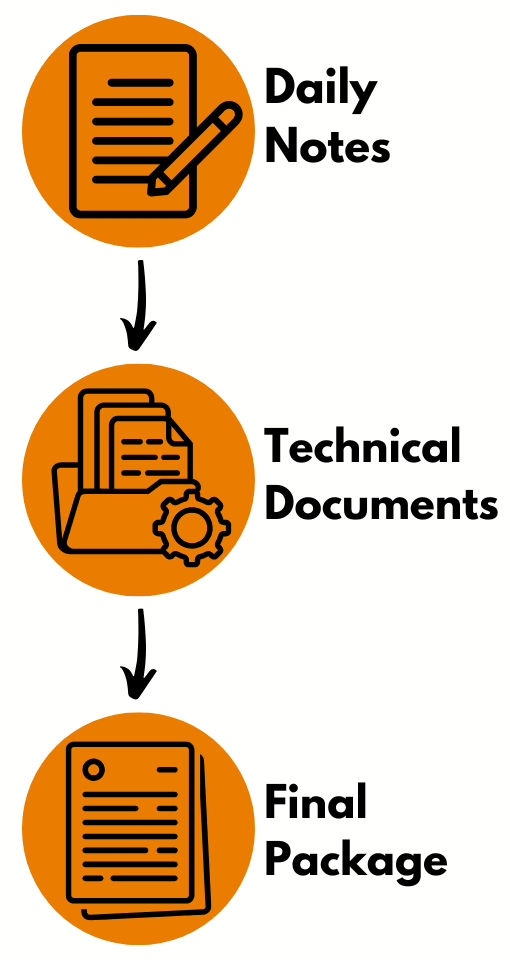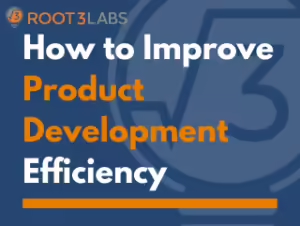Perfect Your Product Development Process
6 Strategies for Meeting Tight Deadlines
The deadline is looming, the requirements are complex, and your team needs to deliver. Sound familiar?
We recently completed a challenging project involving intricate design requirements and multiple heavy components – all on an aggressive timeline. Through careful engineering and sharp project management, we not only met our deadline but delivered exceptional quality.
Chad has spent over 15 years leading complex engineering projects in medical device development and defense systems. He’s been hands-on from early-stage prototyping to full-scale manufacturing, giving him unique insights into the challenges of bringing devices to market. He’s always thinking about how to improve the development process.
Your Product Development Process NEEDS a Time Management Strategy
Every product manager and R&D director knows that time pressure is always on during development. Based on our experiences coordinating multiple team members and manufacturers, here are six strategies to help keep your product development process on track when time is of the essence:
1. Map Your Timeline Backwards
Start with your end date and work in reverse. This critical first step in the development process helps identify:
- Required timeline compression points
- Opportunities to simplify requirements
- Resource allocation needs
If your backward planning reveals you won’t have enough time, you’ll need to adjust scope or add resources – but it’s better to know on day one than discover it too late.
2. Strategically Accelerate with Smart Spending
Some aspects of development can’t be rushed, but others can be accelerated with strategic investment:
- Order spare parts upfront
- Pay premium rates for expedited manufacturing
- Develop backup plans in parallel
3. Maintain Team Alignment on Project Goals
Teams perform best when they understand both their individual tasks and the broader project context. This awareness often sparks creative solutions and helps prevent bottlenecks in the development process.
4. Create Consistent Communication Channel
Early and frequent stakeholder communication prevents costly reworks. Share concept sketches and CAD models regularly – this proactive approach catches potential issues before they become schedule-breaking problems.
5. Build in Modular Milestones
You want your product development process to be well structured:
- Start with core functionality (Minimum Viable Product)
- Add enhanced features as time permits
- Create clear break points between essential and nice-to-have elements
We applied this approach in a recent project by separating structural assembly from cosmetic finishing. This modular approach gave us flexibility while ensuring core functionality.
6. Implement Progressive Documentation
Documentation is critical for project success, but it doesn’t have to be overwhelming. We use a three-tiered approach that starts on day one and grows with the project. This method ensures nothing gets lost while keeping the documentation process manageable and useful.
Documentation is the Blueprint of Product Development
Good documentation isn’t just about checking boxes – it’s about creating value for your team and your client. At Root3 Labs, we’ve developed a practical documentation system that supports project success without slowing down development. Here’s how we break it down:
Daily Progress Notes: Capturing the Journey
Think of these as your project’s living memory. These informal but crucial notes capture research findings, design decisions, and daily progress. They’re especially valuable when:
- A team member needs to step in on short notice
- You’re revisiting design decisions months later
- Training new team members on project background
- Preventing duplicate work across the team
Technical Documents: Supporting Your Decisions
This mid-level documentation tells the story behind your design choices. It includes:
- Design calculations that validate your approach
- Analysis results from testing and simulation
- Prototype performance data
- Critical design decisions and their rationale
This documentation becomes invaluable when modifying designs or troubleshooting issues later on.

Final Deliverables: The Professional Package
These are more polished documents that form the official project record, and can include:
- Detailed manufacturing drawings
- Electrical schematics
- Verification test results
- Operating instructions
- Quality control specifications
*Pro Tip: Start each document with a clear summary that states its purpose and key findings. This simple practice makes documentation more useful and easier to navigate.
Bringing the Product Development Process Together
These strategies helped us deliver complex engineering solutions within tight timelines while maintaining quality. Remember: successful product development isn’t just about solving technical challenges – it’s about solving them on schedule.
Written By: Chad Schneider, MSE, P.E.
Download Our Guide to Product Development!
Want more insights on improving your Product Development process? Access practical strategies for boosting your development efficiency.




